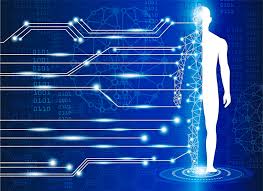Source: star2.com
Providing citizens with good healthcare is one of the greatest challenges facing governments today.
Changing population demographics and the prevalence of chronic disease in developing countries are putting tremendous pressure on healthcare systems around the world.
In Malaysia, the population over 65 years of age is expected to double to nearly 15% of the overall population by 2040.
This, combined with an expanding middle class, rising incomes and an increase in chronic diseases due to lifestyle changes, will drive demand and spending for healthcare services.
This trend is in step with global spending in the sector, which is projected to increase by 4.1% annually between 2017-2021.
As a result, the Health Ministry is working to widen access to health services at an affordable cost.
The current healthcare protection scheme Peka B40, which began in April 2019, is expected to initially benefit 800,000 recipients of the Bantuan Sara Hidup (BSH) programme who are over the age of 50.
One highly promising solution to these challenges is the application of data analy-tics.
Healthcare systems generate extraordinary volumes of data and it is clear that if this mountain of information can be efficiently mined, the insights revealed could transform the industry, from pharmaceutical research and development to the operational management of healthcare providers and patient outcomes.
Technology transformation
The region is seeing an extraordinary surge in the spread of technology in both the corporate and personal spheres.
In 2017, 17 million Malaysians accessed the internet from a mobile phone and that number is expected to increase to nearly 22 million by 2023.
Digital transformation and Industry 4.0 initiatives – including the Internet of Things (IoT) and artificial intelligence (AI) – are also gaining momentum in enterprises across the region.
Technology is already impacting personal attitudes to wellness – people are increasingly taking individual responsibility.
Wearable devices like fitness trackers and smart watch health apps are burgeoning; in fact, just over 170 million units of wearable wristwear devices are forecast to be shipped in 2020, more than any other wearable category.
What this means for the Asian healthcare sector is that stakeholders – patients, providers and insurers – are now at the intersection of a system that finds itself burdened with ageing populations and rising costs, as well as the digital revolution that is reshaping our world.
As the demand for healthcare services increases, so do expectations of what they could and should deliver.
The opportunity is clearly to bring the transformative power of digital technology, including AI and data analytics, to bear on the traditionally labour-intensive and documentation-swamped healthcare industry.
It must be acknowledged that healthcare is still not an industry known for technological innovations – hospitals and healthcare centres typically record charts by hand, use minimal analytics and keep data in silos.
This is at least partly due to factors such as regulations, liability issues and complexity, as well as point-to-point integration interfaces.
However, healthcare providers need to recognise that the benefits of a developed digital health market are profound in the ability to empower patients, improve engagement, make care safer and optimise operations.
The judicious application of digital healthcare also has a significant potential impact on capital expenditures by helping to prevent illness and support the provision of care through alternative locations such as clinics.
As a result, fewer hospitals may need to be built and fewer professionals trained, which would help to relieve the burden on healthcare investment.
Analytic insights
The accumulation of data is just the beginning.
What will really bring about the transformation of healthcare organisations is robust and meaningful analytics at the individual and population levels, aided by advanced AI technologies that scour diverse data sets and reveal actionable insights.
Much of this kind of data will be provided by wearables, as they move from the wellness sector to real-time patient monitoring.
Some examples of such wearable diagnostic and assistive devices include patches that monitor for cancer, ultraviolent (UV) exposure sensors and baby monitoring socks that track oxygen levels, heart rate and sleep.
If healthcare organisations are able to grasp the full potential of the available data, the quality and affordability of care will be significantly impacted.
Analytics can help advances in medical research, as well as improve overall patient outcomes and population health.
Making the resulting insights available on-demand to decision-makers across the organisation can be the key to unleashing an insight-driven healthcare organisation.
It would be wrong, however, to imagine that AI is poised to replace human healthcare professionals.
AI delivers its real value when human decision-making combines with computer-generated analytics, and when algorithms benefit from the input of medical experts.
Confidence that the data is clean, properly indexed and de-fragmented is essential if leaders are to use the resulting insights to make better decisions.
But digital healthcare is really not so much about the technologies.
It’s a question of how the industry as a whole will use these advances to solve healthcare problems, to improve the patient experience and to secure the growth of healthcare providers.
In the coming digital health era, there is no doubt that digitally-enabled care is a fundamental business imperative.
Apart from the benefits to patients of data-driven diagnoses and treatments, all elements of the industry – providers, insurers, medical technology firms and pharmaceutical companies – are seeing major shifts in how care is being delivered.
Over the longer term, the application of data analytics will help system-wide operations and organisations to deliver more powerful health care.
It is certainly the case that technological innovations such as centralised data, advanced analytics and application programme interfaces (APIs) are opening doors for the healthcare industry to help provide better care for all.
Whether it is preventing infection or to get a better sense of the patient as a whole, data-driven solutions are the way of the future for healthcare.
A better healthcare system that puts the patient first and fosters a healthier nation is an objective that all can agree on.
